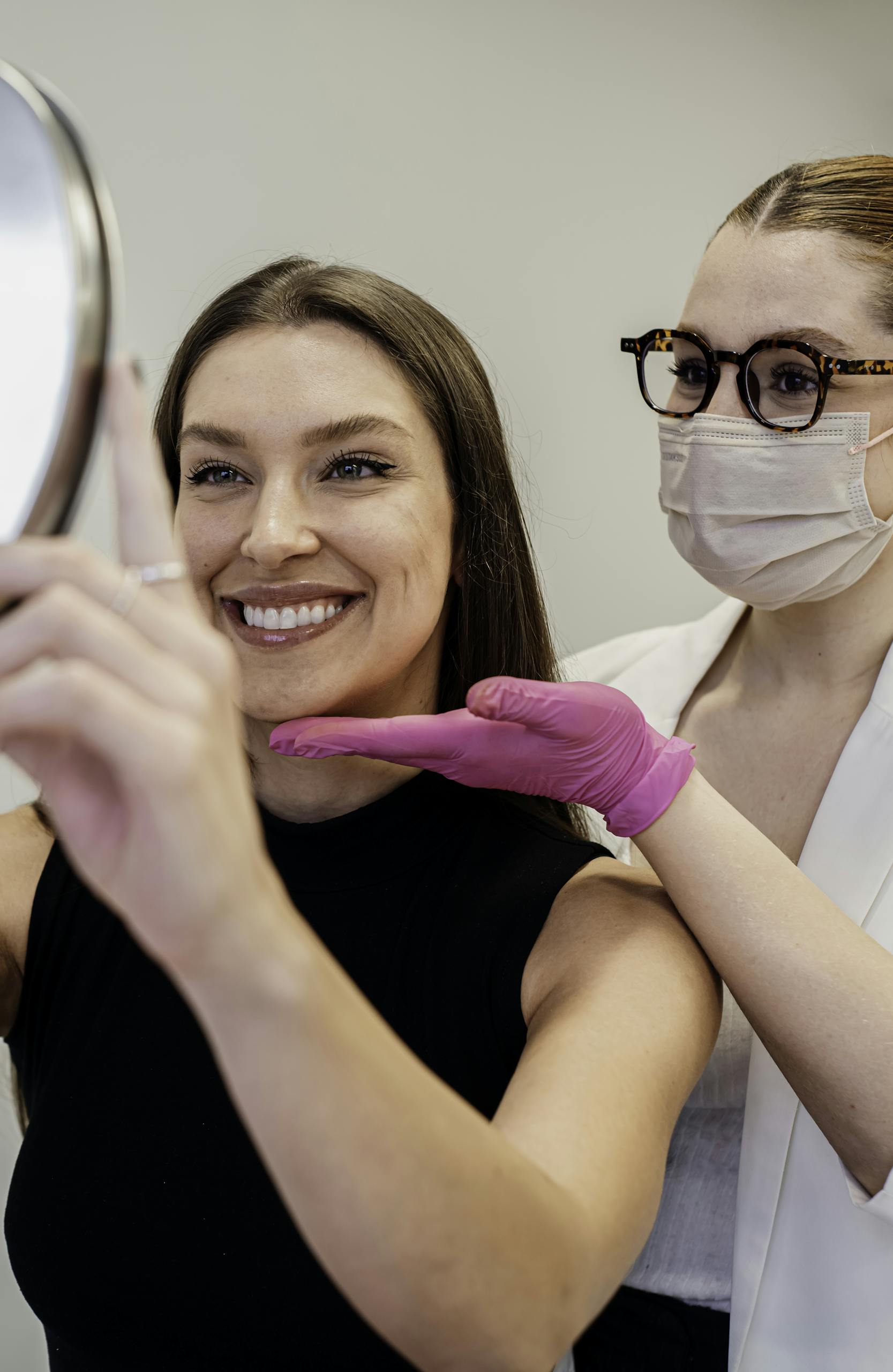Professional eyelash enhancement requires extensive knowledge of both chemical processes and application techniques to achieve optimal results. This comprehensive guide covers everything beauty technicians need to know about performing safe and effective eyelash enhancement treatments, focusing on semi-permanent and cosmetic procedures.
Understanding Chemical Processes
Ammonium Thioglycolate vs Cysteamine HCL
Both chemicals serve as effective lifting agents, each with distinct advantages:
Ammonium Thioglycolate:
- Traditional lifting agent that disrupts disulfide bonds in keratin molecules
- Highly effective for resistant hair types
- Requires precise timing to prevent over-processing
- Best suited for experienced technicians
Cysteamine HCL:
- Gentler formula with reduced risk of irritation
- Maintains lash hydration during processing
- Ideal for sensitive clients and helps to prevent over-processing
- More forgiving application window
For optimal results, consider using a professional lash lift kit which contains precisely formulated solutions using these active ingredients. The choice between Ammonium Thioglycolate and Cysteamine HCL depends on the client’s hair type, sensitivity, and desired outcome. Neither is inherently superior, as both have their specific use cases in the eyelash enhancement industry.
Client Consultation and Safety
Before beginning any enhancement procedure, it’s crucial to conduct a thorough consultation:
- Perform a patch test 24-48 hours before treatment to identify potential allergies
- Screen for contraindications:
- Eye infections or conditions
- Recent eye surgery
- Allergies to ingredients
- Pregnancy (certain treatments may be contraindicated)
- Document client’s natural lash condition, including length, thickness, and curl pattern
- Discuss desired results and manage expectations, providing realistic outcomes based on the client’s natural lashes
- Explain the procedure, including potential risks and aftercare requirements
- Obtain written consent from the client
Emphasize the importance of proper hygiene and safety measures to prevent infections and allergic reactions. Ensure that all tools and work surfaces are properly sanitized before each procedure.
Application Techniques
Basic Lift Procedure
- Cleanse lashes thoroughly to remove any oils or makeup residue
- Apply professional-grade adhesive to secure silicone shields or rods
- Position lashes using a Y-brush or micro-brush, ensuring even distribution
- Apply lifting solution and keep on for the duration as recommended by the manufacturer.
- Remove solution completely using a dry micro-brush
- Apply fixing solution for an equivalent time to set the new curl
- Finish with a tint application and a nourishing step if desired
Advanced Enhancement Options
For comprehensive lash services, consider combining treatments to offer clients a full range of options:
- Lash lift with tinting: Enhance the appearance of lashes by adding color and definition
- Keratin lash enhancement: Infuse lashes with keratin for added strength and shine
- Combination brow and lash services using our cysteamine-based lifting lotion
- Classic lash extensions: Apply one extension to each natural lash for a natural look
- Volume lash extensions: Place multiple thinner lashes on a single natural lash for a fuller appearance
When offering lash extension services, ensure proper training in both classic and volume techniques to cater to clients with various natural lash densities and desired outcomes.
Troubleshooting Common Issues
Under-Processing
- Symptoms: Insufficient curl, rapid drop in lift
- Solution: Adjust processing time based on hair texture and thickness
- Prevention: Proper assessment of natural lash structure and customization of treatment time
Over-Processing
- Symptoms: Frizzed, damaged, or overly curled lashes
- Solution: Immediate application of protein treatment or lash serum
- Prevention: Strict adherence to timing guidelines and regular testing of solution efficacy
Allergic Reactions
- Symptoms: Redness, swelling, or itching of the eye area
- Solution: Immediately remove any product and advise the client to consult an ophthalmologist
- Prevention: Thorough patch testing and careful product selection for sensitive clients
Aftercare Instructions for Clients
Provide clients with clear aftercare guidelines to maintain their enhanced lashes:
- Avoid water contact for 24-48 hours post-treatment
- Refrain from using oil-based products near the eye area for at least 48 hours (in case of eyelash extensions, no oil-based products allowed in eye area for the duration of wearing them)
- Avoid applying mascara or rubbing eyes for 24 hours
- Use a gentle, oil-free cleanser to clean the eye area
- Regularly use conditioning treatments or lash serums to maintain lash health
- Schedule touch-up appointments every 3-4 weeks for maintenance
Educate clients on the importance of proper aftercare to prolong the life of their lash enhancement and maintain overall lash health.
Product Selection and Storage
Maintain product efficacy and ensure consistent results by following these guidelines:
- Store solutions at proper temperature (20-25°C) to maintain chemical stability
- Check expiration dates regularly and discard expired products
- Use appropriate mixing ratios as specified by the manufacturer
- Keep all products sealed when not in use to prevent contamination
- Regularly clean and sanitize all tools and applicators
For best results, use professional-grade products like our Italian-manufactured solutions, which undergo rigorous quality testing and offer consistent results. The Lami Super Booster professional lash lift kit provides everything needed for successful lash enhancement procedures.
Remember, successful eyelash enhancement relies on both technical skill and product quality. Regular training, staying updated on industry trends, and using premium products will help ensure optimal results for your clients. By mastering these techniques and understanding the science behind eyelash enhancement, you can offer safe, effective, and satisfying treatments that keep your clients coming back for more.
